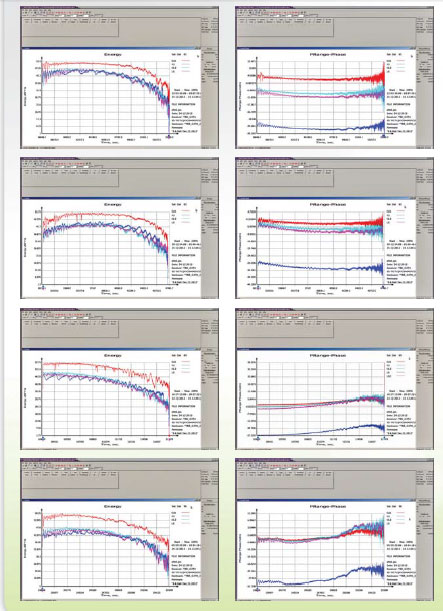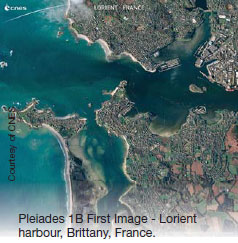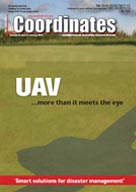
Indian Regional Navigation Satellites System (IRNSS) is the world’s fi rst regional navigation system with its footprint primarily over the Indian subcontinent. The system is expected to have seven satellites in all, with three satellites in GEO stationary and four in GEO synchronous orbits (Kibe & Gowrishankar 2008). IRNSS is dual use and supports two frequencies on either service of operation.
$3 billion generated by Indian geo services industry in 2011
The Indian geo services industry generated $3 billion in revenue in 2011 alone while accounting for approximately 1,35,000 jobs, according to a BCG report commissioned by Google. The report said that the impact of the geo services industry is valued at approximately 15 times it’s own size
Galileo’s search and rescue system passes fi rst space test
The first switch-on of a Galileo search and rescue package shows it to be working well. Its activation begins a major expansion of the space-based Cospas–Sarsat network, which brings help to air and sea vessels in distress. The second pair of Europe’s
New command successor for GPS Directorate
Col. William T. “Bill” Cooley will take up the role of Senior Materiel Leader at the Department of Defense (DoD) acquisition ofô€‚¿ ce for developing and producing GPS satellites, ground systems, and military user equipment. Cooley currently serves as the director of the Air Force Research Laboratory (AFRL) Space Vehicles Directorate and as the commander of the Phillips Research Site at Kirtland Air Force Base, New Mexico. www.marinelink.com/
Car owners ‘frustrated’ by navigation systems, says report
According to the J D Power and Associates 2012 US Navigation Usage and Satisfaction study, the increasing complexity of navigation systems is beginning to impact how happy consumers are with their cars.

NovAtel has announced support for the BeiDou Navigation Satellite System on its OEM6 family and select OEMStar GNSS receivers.The long-anticipated BeiDou Navigation Satellite System (BDS) Interface Control Document (ICD) release is a significant milestone that facilitates global acceptance of BeiDou into the growing range of satellite-based positioning applications.NovAtel has a long-standing partnership with several Chinese GNSS system manufacturers. This partnership has allowed NovAtel to verify B1 and B2 signal tracking on its latest generation receivers. The company has been supplying GNSS receivers that include the BeiDou constellation since Q4 2010. www.novatel.com













 (5.00 out of 5)
(5.00 out of 5)